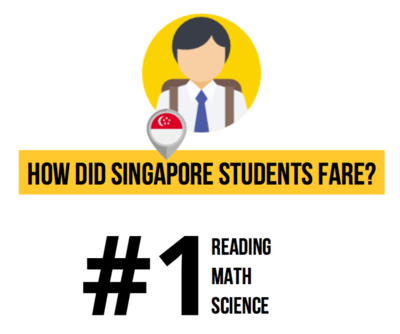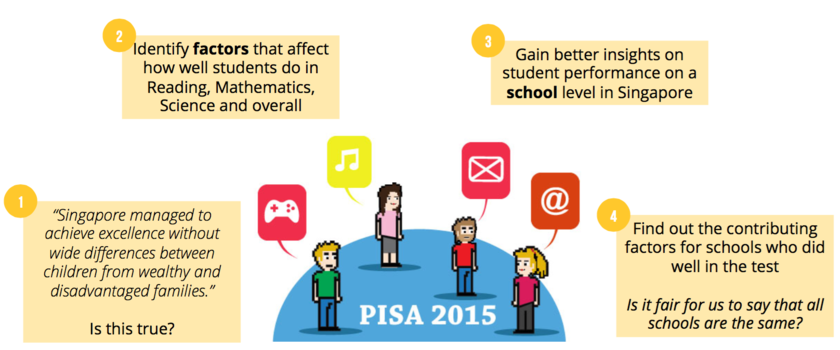|
|
| (12 intermediate revisions by 2 users not shown) |
| Line 1: |
Line 1: |
| | + | <div align="right"> |
| | + | [[ANLY482_AY2016-17_Term_2|<font color="#f9660e" font-family:helvetica><b>Return to ANLY482 AY2016-17 Home Page</b></font>]] |
| | + | </div> |
| | <!-- Navigation bar --> | | <!-- Navigation bar --> |
| − | | + | <!--[[File:T11 Banner.png|840px|center]]--> |
| − | {| style="background-color:#FFFFFF; color:#000000 padding: 5px 0 0 0;" width="100%" cellspacing="0" cellpadding="0" valign="top" border="0" |
| + | [[File:T11 logo.png|center|250px]] |
| − | |style="font-size:100%; text-align:center; border-left:1px solid #ffffff; border-right:1px solid #ffffff;background:linear-gradient(#F9660E, #EE3D10); padding:12px;" width="20%" |[[ANLY482_AY2016-17_T2_Group11 | <font color="#FFF"><b>HOME</b></font>]] | + | <div align="center"> |
| − | |style="font-size:100%; text-align:center; border-left:1px solid #ffffff; border-right:1px solid #ffffff;background:linear-gradient(#F9660E, #EE3D10); " width="20%" |[[ANLY482_AY2016-17_T2_Group11: About Us |<font color="#FFFFFF"><b>ABOUT US</b></font>]] | + | [[File:T11 home.png|135px||link=ANLY482_AY2016-17_T2_Group11]] |
| − | |style="font-size:100%; text-align:center;border-left:1px solid #ffffff; border-right:1px solid #ffffff; background:#444; " width="20%" |[[ANLY482_AY2016-17_T2_Group11: Project Overview |<font color="#ffffff"><b>PROJECT OVERVIEW</b></font>]] | + | [[File:T11 about us.png|135px|link=ANLY482_AY2016-17_T2_Group11: About Us]] |
| − | |style="font-size:100%; text-align:center;border-left:1px solid #ffffff; border-right:1px solid #ffffff; background:linear-gradient(#F9660E, #EE3D10); " width="20%" |[[ANLY482_AY2016-17_T2_Group11: Project Management |<font color="#ffffff"><b>PROJECT MANAGEMENT</b></font>]] | + | [[File:T11 overview 2.png|border|135px|link=ANLY482_AY2016-17_T2_Group11: Project Overview]] |
| − | |style="font-size:100%; text-align:center; border-left:1px solid #ffffff; border-right:1px solid #ffffff;background:linear-gradient(#F9660E, #EE3D10); " width="20%" |[[ANLY482_AY2016-17_T2_Group11: Project Findings |<font color="#ffffff"><b>PROJECT FINDINGS</b></font>]] | + | [[File:T11 mgmt.png|135px|link=ANLY482_AY2016-17_T2_Group11: Project Management]] |
| − | |style="font-size:100%; text-align:center;border-left:1px solid #ffffff; border-right:1px solid #ffffff; background:linear-gradient(#F9660E, #EE3D10); " width="20%" |[[ANLY482_AY2016-17_T2_Group11: Documentation |<font color="#ffffff"><b>DOCUMENTATION</b></font>]] | + | [[File:T11 findings.png|135px|link=ANLY482_AY2016-17_T2_Group11: Project Findings]] |
| − | |}
| + | [[File:T11 documentation.png|135px|link=ANLY482_AY2016-17_T2_Group11: Documentation]] |
| | + | </div> |
| | | | |
| | <br> | | <br> |
| | | | |
| − | <div style="background: linear-gradient(#F9660E, #EE3D10); padding: 15px; font-weight: bold; line-height: 0.3em; text-indent: 0px; font-size:20px; font-family:helvetica"><font color= #FFFFFF>Background</font></div>
| + | [[File:T11 background.jpg|center|840px]] |
| | | | |
| − | Hospital H’s researchers focuses not only on medical sciences, but also on operational improvements. With more data collection points, thanks to the advancement in healthcare technologies, Hospital H’s researchers are better able to make discoveries and improvements in patient care faster and more robust than before.
| + | The Ministry of Education (MOE) collects and analyses data from schools through Singapore to continually improve on their policies and practices in Education which they set for schools in Singapore. However, most of the data from MOE are not publicly available for research and analysis for people who are not working inside MOE. With that limitation, it is hard to gain insights about education in Singapore to make improvements or suggestions to the education system. An alternative for this is through the publicly available data collected by the Organisation for Economic Co-operation and Development (OECD) through the Programme for International Student Assessment (PISA) global education survey. |
| | | | |
| − | To add more meaning to the trove of data collected, external data is sometimes synthesized for epidemiology studies, in order to find patterns, potential causes of health and disease conditions across patient groups in Singapore.
| + | The OECD PISA global education survey is a triennial international survey which aims to evaluate education systems worldwide by testing the skills and knowledge of 15 year old students in math, reading, and science. The survey has become increasingly influential on politicians who see their countries and their policies being measured against these global school league tables. |
| | | | |
| − | As part of their continuing study to improve operational efficiencies in the Emergency Department, Hospital H’s goal is to have an interactive dashboard to study the relationship between environmental factors and the Emergency Department (ED) patient records, for researchers to have a better understanding on the major causes for ED admissions.
| + | Asian countries continue to dominate, with Singapore rated as best, replacing Shanghai, which is now part of a combined entry for China. |
| | | | |
| − | As such, the aim of this project is to synthesize the ED data provided by Hospital H with the environmental data from NEA, then visualizing the data on an interactive platform using Shiny by RStudio, to assist Hospital H in exploring the effects of environmental factors, specifically air quality and weather conditions, on Emergency Department patient admission volume and their reported symptoms.
| + | The 2015 PISA data was released last December 6 2016 and this will be used for the team’s analysis. |
| | | | |
| | + | [[File:T11 interim rank.png|center|400px]] |
| | <br> | | <br> |
| | | | |
| − | <div style="background: linear-gradient(#F9660E, #EE3D10); padding: 15px; font-weight: bold; line-height: 0.3em; text-indent: 0px; font-size:20px; font-family:helvetica"><font color= #FFFFFF>Project Motivation</font></div>
| + | [[File:T11 motivation.jpg|center|840px]] |
| − | | |
| − | With air pollution being a leading environmental threat to public health, air quality is becoming an increasing concern by regulatory agencies like World Health Organization (WHO) and governments around the world, especially with global warming being in the limelight in recent years.
| |
| − | | |
| − | WHO air quality model illustrates that 92% of the world’s population lives in places where air quality levels exceed “WHO’s Ambient Air quality guidelines” for annual mean of particulate matter with a diameter of less than 2.5 micrometres (PM2.5), which is 10 μg/m3. In 2014, Singapore has a mean PM2.5 of 18 μg/m3, which exceeds WHO guideline limits.
| |
| − | | |
| − | Particles in the air such as dust, dirt, soot, and smoke are one kind of air pollution that is known to cause health problems. One key example is extremely tiny particles that are less than 2.5 micrometers in width are known as fine particulate matter, commonly referred to as PM2.5. PM2.5 includes pollutants such as sulfate, nitrates and black carbon, which are fine enough to be inhaled deep into one’s lungs, and can affect one’s cardiovascular system, therefore presenting significant risks to human health.
| |
| − | | |
| − | Similar to many other major cities, the two main sources of air pollution in Singapore are air emissions from the industries and motor vehicles. Another evident source of air pollution is the transboundary smoke haze which is a result of the land and forest fires from our regional neighbours, which influences Singapore’s air quality specifically during the South West Monsoon period from August to October.
| |
| − | | |
| − | The following is a table showing the general health effects of the various common pollutants, extracted from National Environment Agency (NEA).
| |
| | | | |
| − | [[Image: General_Health_Effects.png|center|1000x500px]] | + | [[File:T11 interim motivation.png|center|840px]] |
| | | | |
| | <br> | | <br> |
| | | | |
| − | <div style="background: linear-gradient(#F9660E, #EE3D10); padding: 15px; font-weight: bold; line-height: 0.3em; text-indent: 0px; font-size:20px; font-family:helvetica"><font color= #FFFFFF>Business Problem</font></div> | + | <!-- [[File:T11 problem.jpg|center|840px]] --> |
| | | | |
| − | With such information, Hospital H will be able to gain insights on how air quality indexes affect the volume of Emergency Department patients. Aside from doing further research which stem from the team’s analysis, other actionable steps include better management of manpower allocation in the Emergency Department.
| |
| | | | |
| | <br> | | <br> |
| | | | |
| − | <div style="background: linear-gradient(#F9660E, #EE3D10); padding: 15px; font-weight: bold; line-height: 0.3em; text-indent: 0px; font-size:20px; font-family:helvetica"><font color= #FFFFFF>Data Source</font></div>
| + | [[File:T11 data source.jpg|center|840px]] |
| − | | + | ===OECD=== |
| − | *Meteorological Service Singapore - Daily Average Temperature & Daily Average Wind Speed
| + | PISA Global Education Survey Data |
| − | *National Environment Agency - Daily Air Quality Measurements
| + | [[File:T11 interim data source 2.png|center|400px]] |
| − | *Hospital H - Aggregated daily volume of ED patients, grouped by symptoms
| |
| − | | |
| | <br> | | <br> |
| | | | |
| − | <div style="background: linear-gradient(#F9660E, #EE3D10); padding: 15px; font-weight: bold; line-height: 0.3em; text-indent: 0px; font-size:20px; font-family:helvetica"><font color= #FFFFFF>Deliverables</font></div> | + | <!-- |
| − | | + | [[File:T11 deliverables.jpg|center|840px]] |
| − | ===Insights from Data Analysis===
| |
| − | * As mentioned above, the time-series analysis will be conducted and these insights will be compiled. The insights include a forecasting model of the number of anticipated volume of patients in the Emergency Department as the air quality factors rise to certain levels.
| |
| − | | |
| − | ===Real-time interactive dashboard===
| |
| − | * Upon analyzing relationship of volume of ED patients against different variables after using Panel Data Analysis, various graphs will be used to illustrate the insights gained.
| |
| | | | |
| − | * The dashboard will provide the project sponsor with an analytical toolkit which they can use to propose further hypotheses. It also provides the user with a user interface to view and calibrate accordingly.
| + | ===Insights from Data Analysis=== --> |
The Ministry of Education (MOE) collects and analyses data from schools through Singapore to continually improve on their policies and practices in Education which they set for schools in Singapore. However, most of the data from MOE are not publicly available for research and analysis for people who are not working inside MOE. With that limitation, it is hard to gain insights about education in Singapore to make improvements or suggestions to the education system. An alternative for this is through the publicly available data collected by the Organisation for Economic Co-operation and Development (OECD) through the Programme for International Student Assessment (PISA) global education survey.
The OECD PISA global education survey is a triennial international survey which aims to evaluate education systems worldwide by testing the skills and knowledge of 15 year old students in math, reading, and science. The survey has become increasingly influential on politicians who see their countries and their policies being measured against these global school league tables.
Asian countries continue to dominate, with Singapore rated as best, replacing Shanghai, which is now part of a combined entry for China.
The 2015 PISA data was released last December 6 2016 and this will be used for the team’s analysis.
OECD
PISA Global Education Survey Data






